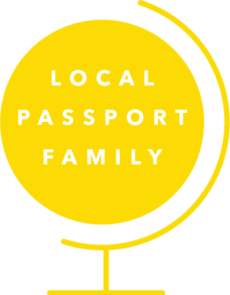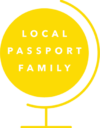Find the full list of Vietnam activities for kids right here!
Facts About Vietnam
Basic Facts About Vietnam
- The capital of Vietnam is Hanoi. The largest city is Ho Chi Minh City.
- The official name is the Socialist Republic of Vietnam.
- Nguyễn Xuân Phúc is the current president of Vietnam.
- Vietnam’s northern border is shared with China, western border is shared with Cambodia and Laos, and the Gulf of Thailand to the east.
- The currency in Vietnam is the Philippine đồng (₫) (VND). About 23,000 Dong = 1 USD.
- Climate in Vietnam is tropical in the south to Temperate in the north. It is generally hot, humid, with a lot of rain, but the mountains in Northern Vietnam can get snowfall. Vietnam receives 59”-79” of rain during the Monsoon season, which causes flooding.
- Freedom of Religion was not protected during modern times until 1992, and almost ¾ of Vietnamese people are not religious. About 15% of Vietnamese people practice Buddhism and 8.5% practice Christianity.
- The primary industries are agriculture, manufacturing – including technology manufacturing – and tourism.
- Ho Chi Minh and other leaders of the Democratic Republic of Vietnam, declared independence from France September 2, 1945 and continued to fight for independence until the 1954 Geneva Conference separated Vietnam into two zones – a Northern Zone “Democratic Republic of Vietnam” governed by the Viet Minh and the southern zone “State of Vietnam” governed by the former emperor Bao Dai. In 1975, Southern Vietnam became part of the Democratic Republic of Vietnam when northern Vietnam successfully captured the Presidential Palace in Saigon.
Interesting Facts About Vietnam
- The Vietnamese language has strong Chinese influence after 1,000 years of Chinese colonization and the tone used in pronouncing a word can change its meaning entirely. “Ma” can mean, ghost, but, mom, grave, horse, or baby rice plant depending how you pronounce the vowel.
- There are 54 ethnic groups in Vietnam. The largest “khin” account for 86% of the population – the remaining 53 ethnic groups tend to be rural with limited access to infrastructure.
- The car tax in Vietnam can triple the cost of a car, so almost all people (except the very rich) ride motorbikes. There are over 60 million motorbikes in Vietnam – a very high number considering that there are only 66 million people aged 15-64 in Vietnam. Definitely look both ways when you’re crossing the road!
- Literacy is very high in Vietnam (97%+) and unemployment is very low (3%).
- Vietnam exports more black pepper and cashews than any other country in the world, and export mostly to the U.S. Vietnam is also the 2nd largest exporter of rice worldwide, after Thailand.
- Vietnamese street foods like Banh Mi sandwiches and Pho soup are so popular they went straight into the oxford dictionary without translation.
- Up to 40% of Vietnamese people share the name Nguyen.
- Vietnam’s Hang Son Doong is the largest discovered cave system in the world – some of the rooms could fit a block of New York City buildings and are said to form their own clouds.
Indigenous Peoples of Vietnam
The Kinh, or Viet, people are the most common ethnic group in Vietnam. They make up about 87% of the Vietnamese population! Vietnamese is the main language that they speak. The Kinh people became great farmers and used dike systems and irrigation.
The name Montagnard is an older word used for indigenous peoples in the central highlands of Vietnam. The Vietnamese word is người Thượng, or highlanders, since Montagnard came from French when they colonized Vietnam. Both of the words are older terms that aren’t commonly used today.
Map of Vietnam
Color in Vietnam on this map of Asia!
Vietnam Flag Activity

- The red background stands for bloodshed & revolution
- The yellow star stands for 5 classes of people in Vietnam: workers, peasants, soldiers, intellectuals, and businessmen.
Flag from HERE
HERE is a fun printable Vietnam flag coloring sheet!

- Until the unification of Vietnam at the end of the Vietnam War in 1975, South Vietnam used a yellow flag with red stripes.
- Many Vietnamese people who fled from Vietnam during a time of trauma identify more strongly with this flag, as it represents the Vietnam Republic instead of an enemy in their homeland from whom they escaped. (Source)
Flag from HERE
HERE is a fun printable South Vietnam flag coloring sheet!
Vietnam Virtual Tour to a Featured Landmark: Hạ Long Bay
Hạ Long Bay is an incredible area in northern Vietnam that has over 1,600 natural limestone islands! It is located in the Gulf of Tonkin and is near the border of China. The limestone islands form pillars and peaks and towers and are covered with rainforests. People do not live on most of the islands. There are also a number of caves there!
Legend of Hạ Long Bay
Legend states that long ago, invaders were coming from the North into Vietnam. To protect the Vietnamese people, the Jade Emperor called to the gods to send Mother Dragon and her children to help defend the country from the invaders. The dragons breathed fire and destroyed the invaders.
After that, the dragons spit jewels of emerald and jade. These jewels turned into tall islands that formed walls to protect the Vietnamese from any future invaders invaders. Mother Dragon and her children then stayed on earth to help the Vietnamese people with everyday tasks.
The name Hạ Long even means “descending dragon”!
Featured Important Vietnamese Person:
Dr. Lưu Lệ Hằng or Dr. Jane X Luu, was born in South Vietnam 1963. The South Vietnamese government lost power in 1965 and many people had to leave the country. That’s why Luu’s family had to escape Vietnam and then live in refugee camps. They were eventually able to leave the refugee camp and move to Kentucky in the United States, where some other family members lived. Luu worked very hard and was the best student in her high school! She then went to college at Stanford University to study physics.
After graduating from Stanford, Luu worked at NASA’s Jet Propulsion Laboratory and fell in love with astronomy. She decided she wanted to earn a PhD at MIT and chose to study the asteroids and comets. After 5 years of observations using the University of Hawaii’s telescope on top of Mauna Kea, she discovered the first known object since Pluto in our solar system’s Kuiper Belt which she nicknamed “smiley.” Her work has helped scientists better understand the history of our solar system. She received several prizes because her research was so helpful to other scientists.
She married a fellow astronomer and has one child. (Source)







